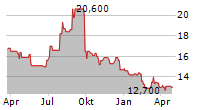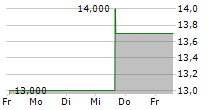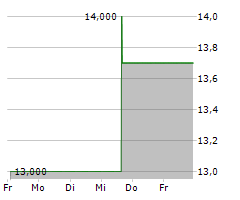
Second-line treatment for adults with mycosis fungoides or Sézary syndrome included in the Ministry of Health's Drug Programme effective as of 1st July 2024.
Kyowa Kirin International (KKI), a wholly owned subsidiary of Kyowa Kirin Co. Ltd., and Swixx BioPharma AG today announced that the Polish Ministry of Health has approved the reimbursement of POTELIGEO (mogamulizumab) in second-line monotherapy for adult patients with Stage IB and above mycosis fungoides (MF), and Sézary syndrome (SS).
MF and SS are two subtypes of cutaneous T-cell lymphoma (CTCL), a rare form of non-Hodgkin's lymphoma that presents and persists in the skin and can have debilitating physical, emotional and social challenges.1 MF-the most common CTCL subtype-accounts for approximately 60% of all CTCLs.2
With an average time to diagnosis of 3-4 years, MF is typically characterised by skin symptoms including patches or plaques, skin redness and tumours.3,4 SS is much rarer, accounting for around 5% of CTCLs,5 and is more aggressive, causing severe itching, erythroderma, intense scaling of the skin and frequent hair loss.6
Jeremy Morgan, President of Kyowa Kirin International, commented: "I am delighted that the Ministry of Health has agreed to reimburse POTELIGEO for MF and SS patients in Poland. Our purpose at Kyowa Kirin is to make people smile, and I am proud to see us living this purpose and achieving such an important milestone for the CTCL community. With a commitment to delivering life changing value for people impacted by under-diagnosed and under-served diseases, approval in Poland now means mogamulizumab is reimbursed in almost 30 countries across the EMEA region, and is a critical step in helping to meet the needs of people living with CTCL."
Kyowa Kirin International and Swixx BioPharma AG signed a Promotion and Distribution Agreement in October 2022. Under the terms of the agreement, Swixx exclusively markets, promotes and distributes mogamulizumab in Poland.
Michal Opuchlik, General Manager of Swixx BioPharma Poland, commented: "The positive reimbursement decision of the Polish Ministry of Health is surely an important achievement for patients in Poland suffering from CTCL. We are very proud that, thanks to the great cooperation between Swixx BioPharma, Kyowa Kirin and all our stakeholders in Poland, we were able to ensure that patients now have access to this medicine, that received the FDA's breakthrough therapy designation several years ago. At Swixx BioPharma we are proud of our mission to bring the innovative therapies of our partners to patients in need and this milestone once again positions Swixx BioPharma Poland among the leading companies securing access to innovative treatments in our country."
About Poteligeo (mogamulizumab)
Mogamulizumabis a first-in-class humanised monoclonal antibody directed against CC-chemokine receptor 4 (CCR4), a protein consistently expressed on cancerous cells seen in both MF and SS,7-9 once mogamulizumab binds to CCR4, it increases attraction of immune cells from the immune system to destroy the cancerous cells.10
About MF and SS
MF and SS are two subtypes of CTCL,which is itself a rare form of non-Hodgkin's lymphoma that presents and persists in the skin.1 CTCL is treatable, but is not generally considered to be curable, and there has been a clear unmet need for novel treatment options. As well as the obvious impact of symptoms upon patients, there can be significant erosions to quality of life for those caring for an individual living with CTCL.11
MF and SS are characterised by localisation of cancerous white blood cells called T lymphocytes (T cells), to the skin.12 These cancerous T cells consistently express a protein called CCR4, which enables them to move from the blood to the skin.7-9 When these cancerous T cells move to the skin, this results in the visible early skin symptoms of red patches or plaques which can resemble psoriasis or eczema in the early stages of the disease.13 Later, for some patients, skin involvement may evolve to include tumours or reddening of the majority of the skin's surface (erythroderma).
MF-the most common CTCL subtype-accounts for approximately 60% of all CTCLs2 and is typically indolent, characterised by skin symptoms including patches or plaques, skin redness and tumours.3,4 SS is much rarer, accounting for around 5% of CTCLs,5 and is more aggressive,6 with high levels of blood involvement.5 It can cause severe itching, erythroderma, intense scaling of the skin and frequent hair loss.6 CTCL can take, on average, between 2 and 7 years for individuals to receive a confirmed diagnosis.13
About Kyowa Kirin
Kyowa Kirin aims to discover novel medicines with life-changing value. As a Japan-based Global Specialty Pharmaceutical Company, we have invested in drug discovery and biotechnology innovation for more than 70 years and are currently working to engineer the next generation of antibodies and cell and gene therapies with the potential to help patients affected by severe and rare diseases. A shared commitment to our values, to sustainable growth, and to making people smile unites us across our four regions Japan, Asia Pacific, North America, and EMEA/International.
You can learn more about the business of Kyowa Kirin at: https://www.kyowakirin.com
About Swixx BioPharma AG
Swixx BioPharma is one of the fastest-growing, largest, intercontinental commercial platforms for the biopharmaceutical industry. Swixx operates subsidiaries across Central and Eastern Europe, Greece, Russia, several Eurasian countries, the Middle East, and via Biopas, a Swixx BioPharma company, in almost 20 Latin American countries. Swixx BioPharma Group has over 1,600 employees and sales likely to exceed a billion Euros in 2024. The company has gathered outstanding rare disease, oncology-hematology, specialty, vaccines and self-medication talent under one roof.
For more information about Swixx BioPharma, please visit: www.swixxbiopharma.com
References
1Kim YH, Bagot M, Pinter-Brown L, et al. Mogamulizumab versus vorinostat in previously treated cutaneous T-cell lymphoma (MAVORIC): an international, open-label, randomised, controlled phase 3 trial. Lancet Oncol. 2018;19(9):1192-1204.
2Willemze R, et al. The 2018 update of the WHO-EORTC classification for primary cutaneous lymphomas. Blood. 2019;133(16):1703-1714.
3Scarisbrick, J, et al. The PROCLIPI international registry of early-stage mycosis fungoides identifies substantial diagnostic delay in most patients. Br J Dermatol. 2019;181(20):350-357.
4Demierre M-F, et al. Significant impact of cutaneous T-cell lymphoma on patients' quality of life. Cancer. 2006;107(10):2504-2511.
5Trautinger F, et al. European Organisation for Research and Treatment of Cancer consensus recommendations for the treatment of mycosisfungoides/Sézary syndrome Update 2017. European Journal of Cancer. 2017;77:57-74.
6Lymphoma Coalition. Cutaneous lymphoma a patient's guide. Available at: https://lymphomacoalition.org/wpcontent/uploads/Cutaneous_lymphoma_-_patients_guide_-.pdf. Last accessed: July 2024
7Ferenczi K, et al. Increased CCR4 expression in cutaneous T cell lymphoma. J Invest Dermatol. 2002;119:1405-10.
8Yoshie O, et al. Frequent Expression of CCR4 in Adult T-Cell Leukemia and Human T-cell Leukemia Virus Type 1-transformed T cells. Blood. 2002;99(5):1505-11.
9Ishida T, et al. Clinical Significance of CCR4 Expression in Adult T-cell Leukemia/Lymphoma: Its Close Association With Skin Involvement and Unfavorable Outcome. Clin Cancer Res. 2003;9:3625-34.
10Duvic M, et al. Mogamulizumab for the treatment of cutaneous T-cell lymphoma: recent advances and clinical potential. Ther Adv Hematol. 2016;7(3):171-174.
11Williams et al (2020) Health state utilities associated with caring for an individual with CTCL. Journal of Medical Economics. 2020; 23(10):1142-1150.
12Scarisbrick JJ, Prince M, Vermeer MH, et al. Cutaneous Lymphoma International Consortium Study of Outcome in Advanced Stages of Mycosis Fungoides and Sézary Syndrome: Effect of Specific Prognostic Markers on Survival and Development of a Prognostic Model. J Clin Oncol. 2015;33(32):3766-3773.
13Cutaneous Lymphoma Foundation, Lymphoma Action and Lymphoma Coalition Europe. Cutaneous lymphoma a patient's guide. 2019. Available from: https://lymphomacoalition.org/wpcontent/uploads/Cutaneous_lymphoma_-_patients_guide_-.pdf. Last accessed: July 2024.
KKI/INT/MOG/1166
Date of preparation: July 2024
View source version on businesswire.com: https://www.businesswire.com/news/home/20240731235221/en/
Contacts:
Stacey Minton
Stacey.Minton@kyowakirin.com




